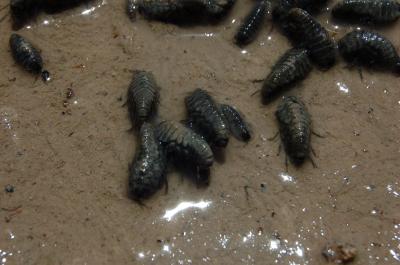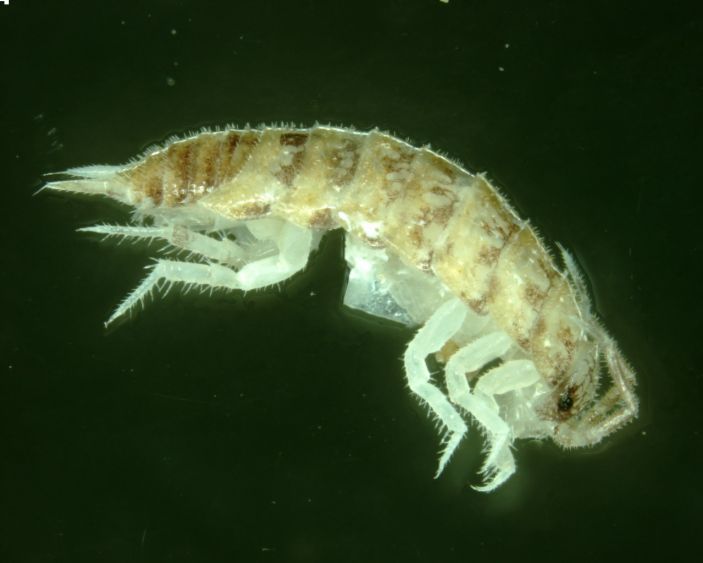The researchers toured underground caves and groundwater bodies for four years, and found remnants of a time when Australia was wetter

In May 2005, researchers at the Hebrew University announced that they had discovered a cave whose entrance was recently uncovered in the Nesher company's large quarry in Ramla, an underground world new to science that had been cut off from the environment for at least 5-7 million years and contains an entire ecological chain. The researchers identified eight new species of invertebrates that have in common their blindness, in the absence of light, it is a shame for the body to waste energy on the sense of sight. It turns out that around the same time researchers in Australia began exploring caves and groundwater bodies across the continent, and now they are publishing the discoveries of 850 new species of invertebrates.
Australian researchers have discovered a huge number of new species of invertebrates living in underground water, caves and "microcaves" against the harsh conditions of the Australian book. An Australian national team of 18 researchers discovered 850 new species of invertebrates, including various insects, small crustaceans, spiders, worms and many others.
The team, led by Prof. Andy Austin from Adelheid University, Dr. Steve Cooper (South Australian Museum) and Dr. Bill Humphreys (Western Australian Museum) carried out a comprehensive four-year survey of underground water bodies, caves and microcaves in the arid and semi-arid regions of Australia.
"What we found is that you don't have to go looking for the depths of the ocean to discover new species of invertebrates - you have to look in your own backyard," says Prof. Austin from the Australian Center for Evolutionary Biology and Biodiversity at the University of Adelaide.
"Our research revealed entire communities of invertebrates that were previously unknown to science. What we discovered is an entirely new component to Australia's biodiversity mix. This is a huge discovery and covers only about a fifth of the number of subterranean species we believe inhabit the Australian book.”
Only about half of the species discovered so far have been named. In general, the animals found in the groundwater are known as "stygofauna" and those living in caves and microcaves will be called "troglofauna". Professor Austin says the team has a theory as to why so many new species have been hiding underground and in caves.

"Fundamentally what we are seeing is the result of past climate change. Central South Australia was a much wetter place 15 million years ago, when there was a flourishing of surface invertebrate species. However, when the continent became drier, a process that began only recently in geological terms, ie 1-2 million years ago, resulting in our current arid environment. Some of the species found refuge in comfortable and isolated habitats, such as groundwater and microcaves, where they survived and developed in isolation from each other.
"The discovery of 'this' new biodiversity, although it is scientifically exciting, also poses a number of challenges in the field of conservation because many of these species are found in areas that may be potentially affected by mining activities and development activities that have improved the pastoral tranquility in which they are found."
The research team reported its findings At a scientific conference that dealt with evolution and biodiversity held in the Australian city of Darwin, which celebrates the 200th anniversary of Charles Darwin. The conference ends today.

6 תגובות
Isn't it the most fun to collect worms and caterpillars and make fun of how the caterpillar turns into a beautiful butterfly? So because you're gay
Lior. What you saw was a caterpillar (not a worm) of the haunted fluke. Is it true that you found it near the haunted bushes? I grew these when I was little and also recently with my little daughter. What a beautiful butterfly it turns out to be!
I saw an unspecified worm anywhere about the size of a finger with a green color on its head
Two black poors are erected, does anyone know what this is?
This study reminds me of the cave episode in the BBC's Planet Earth.
To my father
The reduced image of the Astronomy Picture of the Day is not the same as the resulting enlarged image. Please note.
Good signature
Sabdarmish Yehuda
Hey cockroaches!! Spray there quickly with K300 !!!!